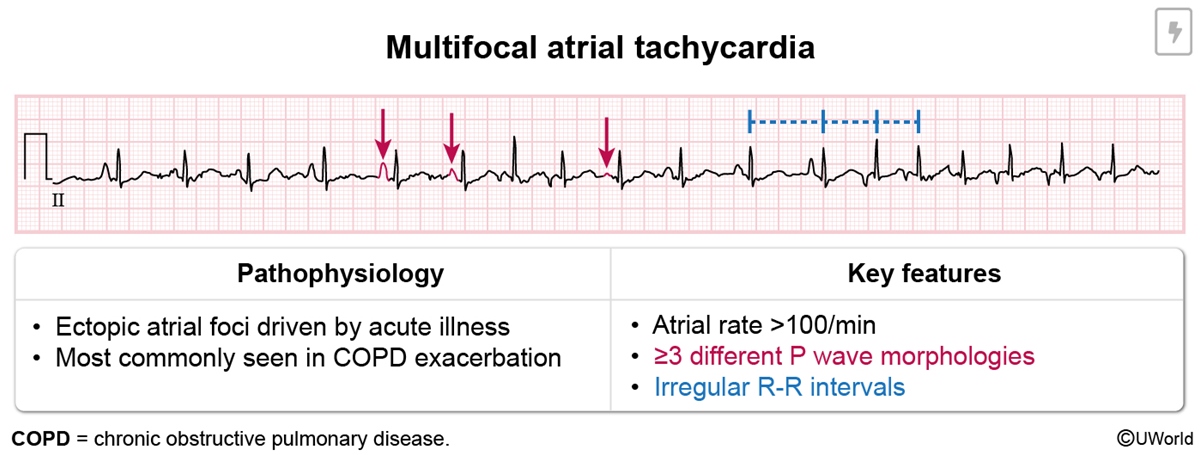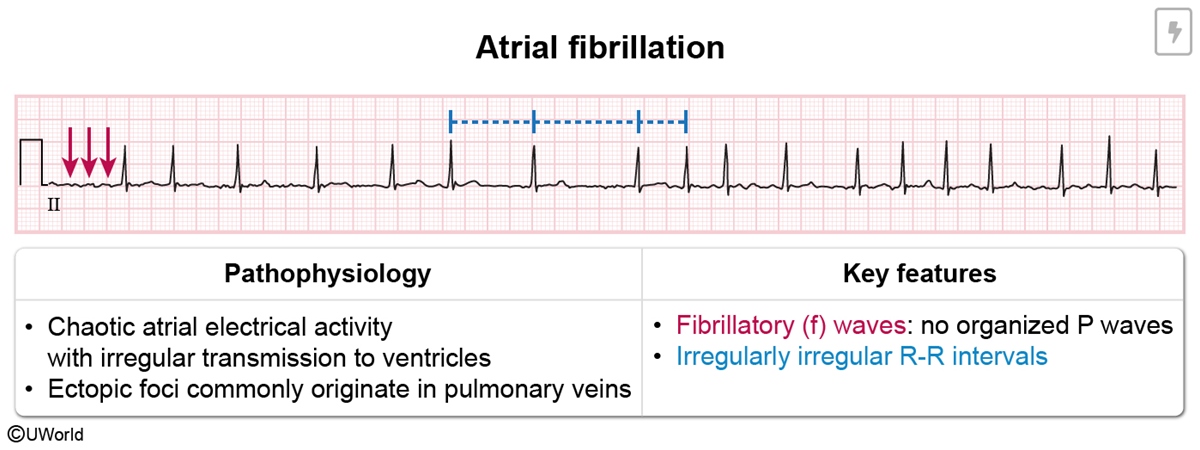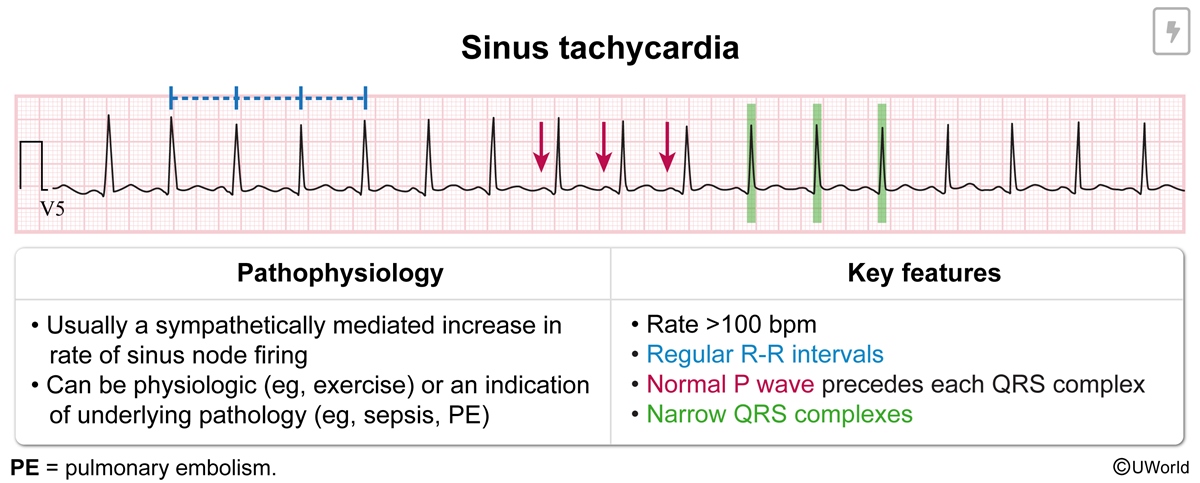Multifocal Atrial Tachycardia
Article Sections
Introduction
Multifocal atrial tachycardia (MAT) is a supraventricular tachycardia that likely occurs due to atrial conduction abnormalities triggered by acute illness. It is most commonly seen in elderly patients with acute lung disease or an exacerbation of chronic lung disease. The arrhythmia itself rarely causes symptoms (other than palpitations) or hemodynamic instability, but it is important to recognize and differentiate it from other supraventricular arrhythmias.
Pathophysiology
MAT likely develops due to atrial conduction abnormalities triggered by disturbances such as right atrial enlargement, catecholamine surge (eg, sepsis), and/or electrolyte imbalance (eg, hypokalemia, hypomagnesemia). The strong association with lung disease is likely largely driven by hypoxic pulmonary vasoconstriction leading to right atrial dilation and stretching. Similar to atrial fibrillation, atrial remodeling (ie, conduction system, structural changes) driven by aging and comorbidities may create a substrate that makes it easier for MAT to develop. Electrolyte abnormalities, which are common with acute illness, as well as the catecholamine surge that accompanies acute illness, likely further contribute to MAT development.
Continue Learning with UWorld
Get the full Multifocal Atrial Tachycardia article plus rich visuals, real-world cases, and in-depth insights from medical experts, all available through the UWorld Medical Library.
Figures


